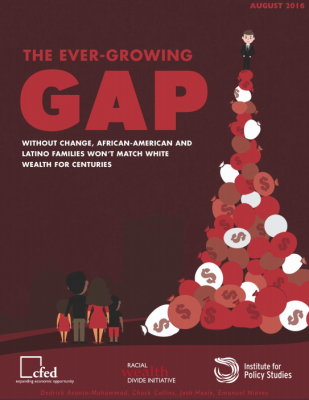Instead, let's start with a little story. Imagine that it's 1890 and you and a friend have bought a donkey and cart and started a moving company that transports heavy objects, such as sofas and beds. If you work hard, you can manage two deliveries a day, for each of which you charge a price that, if adjusted for inflation, would amount to fifty-five dollars today. Let's say overhead, such as advertising and food for the donkey, comes to ten dollars a day. That means you and your partner each earn fifty dollars a day.
Now imagine that time shoots forward fifteen years and a bank lends you money to buy one of the newfangled motorized trucks that are coming onto the market. They can pull much heavier loads than a donkey can: up to four thousand pounds. Once you've learned how to drive your new vehicle, you can carry a lot more stuff, and charge much higher prices—say, a hundred and ten dollars a load. Since the truck moves a lot faster than a donkey does, you can also double your number of daily deliveries to four. Assuming you can find enough customers, the amount of revenue your business produces will shoot up to four hundred and forty dollars a day. Even if your costs jump to forty dollars a day (factoring in gas and interest payments on the truck), you and your partner will each earn two hundred dollars. Thanks to technological progress, your earnings will have quadrupled.
Of course, this parable leaves out a lot, including the fact that competition tends to drive down prices over time. But it still conveys an essential fact about the modern economy, which Karl Marx and other nineteenth-century critics of capitalism originally denied: over the long haul, technological progress raises productivity, which, in turn, generates higher wages and living standards. Until recently, in fact, economy-wide productivity growth and wage growth have tended to have a one-to-one relationship. When productivity rose rapidly, as it did in the period from 1945 to 1973, wages also rose rapidly. When productivity growth slowed sharply, as it did between 1973 and 1995, wage growth also stagnated.
In the United States over the past twenty years, however, the tight relationship between productivity growth and wage growth has broken down. Wages have slipped behind productivity. Economists debate why this has happened, and how long the situation might last. (Some point to the rising cost of non-wage benefits, such as health insurance; others to the fact that profits have risen relative to wages.) But none deny that, over the long term, a healthy rate of productivity growth is a prerequisite for a further rise in living standards. Or that an anemic rate of productivity growth is a recipe for stagnation and class conflict.
Which brings me, finally, to the figures released this week by the Bureau of Labor Statistics. The new data showed that productivity in the non-farm business sector of the U.S. economy—i.e., most of it—has declined for the third quarter in a row. That's the longest falling streak since 1979, and, unfortunately, it isn't merely a statistical blip. Since 2007, the rate of productivity growth has been disappointing. Since 2010, it has been extremely disappointing.
Some numbers tell the story. Between 1947 and 1973, output per hour (the standard measure of labor productivity) rose at an annual rate of about three per cent. Then, between 1974 and 1995, for reasons that have never been fully explained, the rate of growth fell by half, to 1.5 per cent. Not coincidentally, this was the period when wage growth started to stagnate. Then things improved. For a decade or so, perhaps owing to the development of the Internet, the rate of productivity growth returned to about three per cent, and wages started to rise again. Optimists predicted a bright future—one that didn't materialize.
Since 2007, the annual rate of productivity growth has averaged about 1.3 per cent. Since 2010, it has been even lower, about 0.5 per cent. According to the new figures, in the twelve months that ended in June, the growth rate of output per hour was negative 0.5 per cent. In the three months that ended in June, the annualized growth rate was negative 0.4 per cent.
Now, those last two numbers shouldn't be taken too seriously. Quarterly productivity figures are very volatile, and the most recent ones reflect a decline in G.D.P. growth that appears to have ended. More worrying is the fact that slow productivity growth has now persisted for almost a decade, and that this development hasn't been restricted to the United States. Something similar has happened in countries like Japan, Germany, France, and the United Kingdom. Whatever is driving the slowdown in productivity growth appears to be affecting the advanced world as a whole. What is it? Three possible answers have been put forward, and I'll go through them in order of how alarmist they are.
The most benign explanation is that it's all, or mostly, a statistical mirage. According to this school of thought, the basic problem is that the government's figures are too antiquated to keep up with today's hyper-connected economy, in which new goods and services are introduced at a breakneck pace. "Today's pessimists about the economy's rate of growth are wrong because the official statistics understate the growth of real GDP, of productivity, and of real household incomes," Martin Feldstein, the Harvard economist, wrote in the Wall Street Journal last year.
On its face, this is a persuasive explanation. To someone of my generation, which came of age when the personal computer was a novelty, things like Siri, FaceTime, and G.P.S.-generated directions seem like technological marvels. Surely they must have saved us time and made us more productive. If the official productivity figures don't reflect this, mustn't there be something wrong with them?
Perhaps not. Earlier this year, three experts on productivity statistics—David M. Byrne, of the Federal Reserve Board; John G. Fernald, of the Federal Reserve Bank of San Francisco; and Marshall B. Reinsdorf, of the International Monetary Fund—published a study that debunked the mismeasurement explanation. The team of economists made three key points. First, they said, mismeasurement has always been an issue in the information-technology sector, and it was just as big an issue in the period from 1995 to 2005, when productivity was growing rapidly. Second, the productivity slowdown hasn't been confined to sectors in which output is tough to measure: it has been broadly based. And, finally, many of the benefits that we've reaped from things like smartphones and Google searches have been confined to non-market activities, such as communication with friends and other leisure activities, rather than boosting our productivity at work. While that amounts to an increase in consumer welfare, it doesn't generate higher wages.
A second possible explanation, and one that may withstand further scrutiny, is that the productivity slowdown has been a temporary, although extended, product of the Great Recession. Many productivity-enhancing new technologies are capital goods—think back to the moving truck. But since the recession ended, many businesses have been crimping on capital investments, preferring to hoard cash or spend it on stock buybacks.
It's not just that senior executives now care only about their company's stock prices, although that may have played a role. The bigger issue is that many corporations aren't seeing enough demand for their products to justify large new investments. And even when they do see an uptick in demand they hire new workers who have to make do with existing equipment. So employment growth looks healthy, but the economy remains stuck in a low-growth, low-investment, low-productivity trap.
If this is what's happening, there isn't anything wrong with new technology, or the economy's capacity to grow: the issue is how to exploit its potential. If higher demand could be sustained, perhaps through a fiscal or monetary stimulus, firms would step up investment, and the economy would return to a more virtuous circle, in which higher rates of productivity growth and G.D.P. growth reinforced each other. This is basically what happened between 1945 and 1973.
But there's a final explanation, the darkest of all. It has been put forward, most recently, in a monumental new book, "The Rise and Fall of American Growth," by Robert Gordon, an economist at Northwestern. Gordon's theory, parts of which I recall him explaining to me over a lunch, in Chicago, some fifteen years ago, is that technological advancement just ain't what it used to be.
To Gordon's mind, things like the Internet and the smartphone, while they are undoubtedly marvellous products of human ingenuity, don't match up to previous technological innovations, such as indoor plumbing, the internal-combustion engine, electrification, and commercial jetliners. In speeches, Gordon sometimes holds up pictures of a flushing toilet and an iPhone and asks audience members which one they would rather give up. "Look at what an ideal kitchen looked like in 1955," he told the Wall Street Journal a few years ago. "It's not that different than today. It's nothing like moving from clotheslines to clothes dryers."
If Gordon is right, sagging productivity figures simply reflect the fact that scientific progress doesn't have as much impact on the economy as it once did. Rather than waiting for productivity growth and wages to rebound of their own accord, Gordon supports policies designed to expand the size and quality of the labor force, such as raising the retirement age, letting more immigrants into the country, and expanding access to higher education. His argument also implies that we will have to get used to lower productivity growth.
Which of the three explanations is the most convincing? It seems to me that there is something to all of them.
Despite the work of Byrne, Fernald, and Reinsdorf, measurement issues are a concern. It's not just a matter of capturing and classifying the outputs of digital industries. As advanced economies develop, many of their fastest-growing parts tend to be service industries, such as health care, in which output can be hard to track. Government statisticians are well aware of this problem, but so far they haven't come up with a fully satisfactory solution.
Persistently depressed demand is also a serious problem. In addition to undermining firms' incentives to invest in technology, it degrades the skills of workers who can't find a job that matches their qualifications. Fifty years ago, Keynesian economists like Nicholas Kaldor and P. J. Verdoorn examined the close links between rising demand and rising productivity. It might benefit some of today's economists to rediscover this research.
Finally, Gordon's argument, although controversial, cannot be dismissed. After all, the slowdown in productivity growth is nothing new. It began more than forty years ago, and, setting aside the decade from 1995 to 2005, it's been in place ever since. How long does an economic phenomenon have to last before it is regarded as permanent rather than temporary? In recent years, the productivity slowdown has become more acute, and the belief that it will persist has led corporations and investors to downsize their expectations for future G.D.P. growth. This pessimism about growth helps explain, among other things, the fact that long-term interest rates are now negative in many advanced countries.
The key question is where we go from here. Ultimately, perhaps, ongoing advances in artificial intelligence, robotics, Big Data, and other new technologies will push productivity onto a much higher growth path, generating a new leap in living standards and demonstrating that the pessimists were mistaken. For now, though, we appear to be living in Gordon's fallen world.ers would quit right there. Productivity is one of those subjects that fascinates economists and


.jpg)
.jpg)
.jpg)
.jpg)

